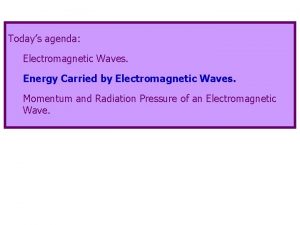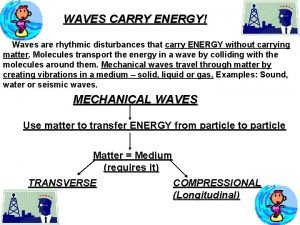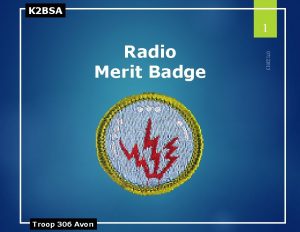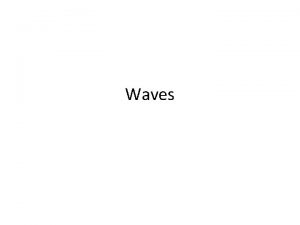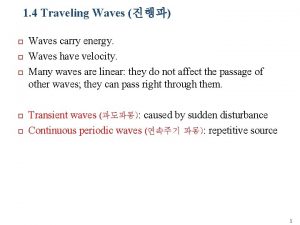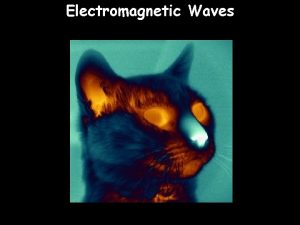Waves Central Concept Waves carry energy from place







- Slides: 7

Waves Central Concept: Waves carry energy from place to place without the transfer of matter.

What You Should Be Able To Explain: 4. 1 Describe the measurable properties of waves (velocity, frequency, wavelength, amplitude, period) and explain the relationships among them. Recognize examples of simple harmonic motion. 4. 2 Distinguish between mechanical and electromagnetic waves. 4. 3 Distinguish between the two types of mechanical waves, transverse and longitudinal. 4. 5 Recognize that mechanical waves generally move faster through a solid than through a liquid and faster through a liquid than through a gas.

Simple Harmonic Motion

Mechanical and Electromagnetic Waves • Mechanical Wave: A mechanical wave is a disturbance that travels through some material. A mechanical wave requires a medium. Carry mechanical (KE) energy Recognize that mechanical waves generally move faster through a solid than through a liquid and faster through a liquid than through a gas. – Sound waves, waves in a Slinky and pressure waves – Mechanical waves transport energy and not material – – – Two Types of mechanical Waves: • Transverse waves • The next type is longitudinal waves. A longitudinal wave is much like a Slinky. When the particles the wave is traveling through are close together, it is called compression. When the particles the wave is traveling through are spread apart, it is called rarefaction.

• Longitudinal Wave: --this is if the particles move back and forth along a line that is parallel to the direction in which the wave moves • TRANSVERSE WAVE: --this is if the particles vibrate in a direction that is perpendicular to the line along which the wave moves.

Electromagnetic waves • Electromagnetic radiation (an example of a transverse wave) – Can travel with or without medium – All electromagnetic waves are transverse waves – Light is an example of this – Carry electric and magnetic energy – Several types • radio waves, microwaves, infrared radiation, visible light, ultraviolet radiation, X-rays and gamma rays. – Electromagnetic Spectrum

R O Y G B I V
